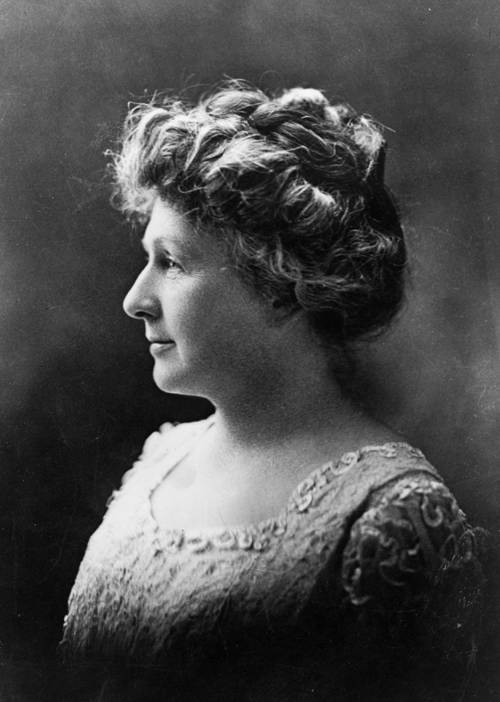
FAQ About Annie Jump Cannon

Who was Annie Jump Cannon?
Annie Jump Cannon was an influential American astronomer born in 1863. She is most famous for developing the Harvard Classification Scheme, which is the contemporarily used system for classifying stars based on their spectral types. Cannon played a vital role in advancing the understanding of stellar properties and contributed to categorizing over 350,000 stars during her career.

What is the Harvard Classification Scheme?
The Harvard Classification Scheme, developed by Annie Jump Cannon, is a system used to classify stars according to their spectral characteristics. It uses a sequence of letters (O, B, A, F, G, K, M) to denote different types of stars based on their temperature, with O being the hottest and M being the coolest. This system remains a foundational tool in astronomy for understanding stellar properties.

How did Annie Jump Cannon contribute to modern astronomy?
Annie Jump Cannon made significant contributions to modern astronomy by establishing the Harvard Classification Scheme. This system allowed for a standardized method of classifying stars by their spectra, leading to better understanding of stellar temperatures and compositions. Her work laid the groundwork for future astronomical research and advancements in the study of stars.

When did Annie Jump Cannon work at the Harvard Observatory?
Annie Jump Cannon began working at the Harvard Observatory in 1896 and continued her career there until her retirement in 1940. During this time, she made substantial contributions to the field of astronomy, particularly in the classification of stars.

Why is the OBAFGKM sequence important in astronomy?
The OBAFGKM sequence is crucial in astronomy as it classifies stars by their spectral type, which reflects their surface temperature and intrinsic properties. This classification helps astronomers understand the lifecycle, composition, and evolution of stars. Annie Jump Cannon's refined system provided a much-needed structure for decades of stellar research.

What challenges did Annie Jump Cannon face as a female astronomer?
As a female astronomer in the late 19th and early 20th centuries, Annie Jump Cannon faced gender-based obstacles in her field, which was predominantly male. Despite these challenges, she persevered and earned recognition for her contributions, becoming a highly respected figure in astronomy. Her achievements paved the way for more women to enter the field.

How many stars did Annie Jump Cannon classify?
Annie Jump Cannon classified more than 350,000 stars during her career. Her work on the Henry Draper Catalog involved detailed analysis and recording of stellar spectra, forming the basis for the modern understanding of stellar classification.

What awards did Annie Jump Cannon receive for her work?
Annie Jump Cannon received numerous honors throughout her career in recognition of her pioneering work in astronomy. Notably, she was the first woman to receive an honorary doctorate from Oxford University. She also received the Henry Draper Gold Medal from the National Academy of Sciences and was the first woman elected as an officer of the American Astronomical Society.

What educational background did Annie Jump Cannon have?
Annie Jump Cannon graduated from Wellesley College with a degree in physics in 1884. Later, she studied astronomy at Radcliffe College (affiliated with Harvard) under the guidance of Edward C. Pickering, director of the Harvard Observatory, which set the stage for her pioneering work in stellar classification.

How is Annie Jump Cannon viewed in the history of astronomy?
Annie Jump Cannon is regarded as a pivotal figure in the history of astronomy due to her enduring contributions to the classification and study of stars. Her methodology and dedication have had a lasting impact on the field, earning her a place among the most influential astronomers of the 20th century.

Did Annie Jump Cannon work alone or with a team?
Annie Jump Cannon worked as part of a team at the Harvard Observatory, which was known as the "Harvard Computers"—a group of female astronomers who analyzed vast amounts of data for stellar classification. Though Cannon's personal contributions were monumental, she worked alongside other significant figures like Henrietta Swan Leavitt and Antonia Maury.

What was the social impact of Annie Jump Cannon’s work?
The social impact of Annie Jump Cannon's work extended beyond her astronomical contributions by challenging gender norms and paving the way for future generations of women in science. Her success highlighted the importance of diversity in scientific inquiry and inspired other women to pursue careers in astronomy and other scientific fields.

How is Annie Jump Cannon honored today?
Annie Jump Cannon's legacy is honored through various awards and acknowledgments, such as the Annie Jump Cannon Award for outstanding contributions to the field of astronomy by female astronomers. Her work remains intrinsic to the study of stars, and she continues to be celebrated for her role in broadening the participation of women in science.

What were some of the milestones in Annie Jump Cannon’s career?
Key milestones in Annie Jump Cannon's career include her significant refinement of the Harvard Classification Scheme, her extensive work on the Henry Draper Catalog, receiving the Henry Draper Gold Medal, and becoming the first woman officer of the American Astronomical Society. Her honorary degree from Oxford University further marks her international recognition and contributions to science.

How did Annie Jump Cannon influence stellar classification systems?
Annie Jump Cannon influenced stellar classification systems by creating a simplified method that categorized stars based on temperature and spectral characteristics using the sequence OBAFGKM. Her approach made it easier for astronomers to classify and understand the diversity and properties of stars, significantly shaping the study of stellar astronomy.

Why was the work of the "Harvard Computers" important?
The work of the "Harvard Computers," including Annie Jump Cannon, was vital because it involved the classification and analysis of thousands of stellar spectra, providing a systematic approach to understanding stellar surfaces and compositions. This work laid the foundation for modern astrophysics and helped shape the future study of celestial bodies.

What led Annie Jump Cannon to pursue a career in astronomy?
Annie Jump Cannon's interest in astronomy was sparked by her college studies and collaborations with influential astronomers at Radcliffe College. Her curiosity about the stars, coupled with her passion for scientific inquiry, led her to pursue a distinguished career at the Harvard Observatory where she could immerse herself fully in her research.

How did Annie Jump Cannon’s work impact the field of astrophysics?
Annie Jump Cannon’s work greatly impacted astrophysics by establishing a standardized method for classifying stars, which is essential for understanding their physical properties and life cycles. Her system provided valuable data that continues to aid researchers in exploring the origins and evolutions of stars across the universe.

Was Annie Jump Cannon involved in any other scientific activities?
In addition to her primary work in stellar classification, Annie Jump Cannon was actively involved in promoting the role of women in science. She participated in various scientific societies and advocated for science education, believing in its importance for both men and women.

What is the legacy of Annie Jump Cannon?
The legacy of Annie Jump Cannon is a testament to her pivotal role in advancing astronomy and promoting gender equality within the field of science. Her classification system remains a cornerstone of stellar astrophysics, and her efforts to encourage women in science continue to inspire future generations of scientists.
